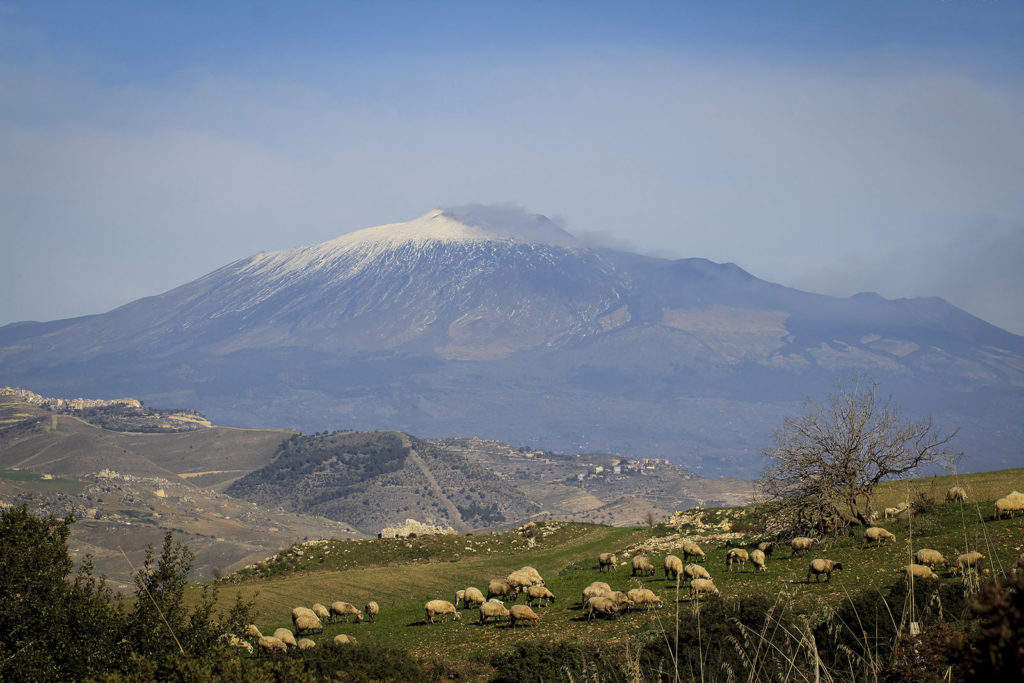Etna is one of the most active and well-known volcanoes in the world, as well as a wonderful example of how geological processes leading to the formation of new earth are constantly active.
This volcano is characterised by an almost constant eruptive activity from its summit craters, and by periodic emissions of lava flows from the sub-terminal areas and the flanks at a medium altitude.
These are the reasons why Etna was included in the
Unesco
World Heritage List in 2013.
One of its main characteristics is the continuous change in the
type of volcanic activity
, from totally effusive to Strombolian and sub-Plinian, in addition to its high number of eruptive events.
All characteristics that in the last 50 years, i.e. since the birth of the scientific discipline of Volcanology, have led Etna to become one of the most well-known and used natural laboratories in the world. Both in traditional popular culture and in science, the name Etna is always associated with the word “Mount”, or the “Muntagna” in Sicilian dialect.
This is because, with its approximately 3400 metres of elevation above sea level, Mount Etna is practically visible from all of Sicily and a good part of Ionian Calabria.
